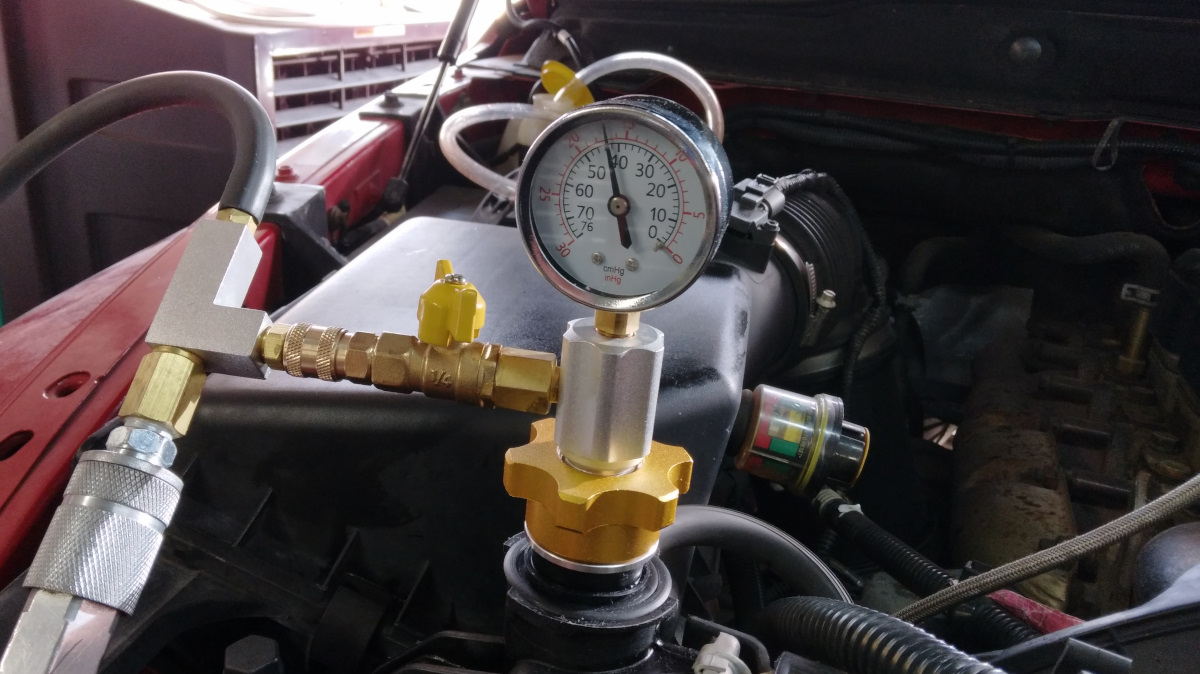Preventive Care for the Ram Cummins Cooling System
The Ram’s cooling system came due for thorough testing and a coolant change. The cooling system has always functioned reliably on the road. Given the track record for Ram Cummins 6BT and ISB water pumps, two water pump replacements over the span of 185,000 miles is not unusual. Fortunately, each water pump failure came with ample warning. Neither pump change-out was on the road.
Protecting the cooling system is always a concern. I replace parts before they fail in service. During the first drive belt change, the belt tensioner and idler pulley were replaced. I changed the coolant and thermostat at the last water pump replacement. The thermostat has maintained normal opening and closing temperatures since. At the current mileage, the hoses and radiator are due for pressure testing.
I watch the temperature gauge under all driving conditions. Recently, the engine has been running just a few degrees warmer while trailer pulling on grades. A cooling system flush and coolant change were due. Pressure testing, inspection, flushing and fresh coolant will keep the cooling system reliable and protected.
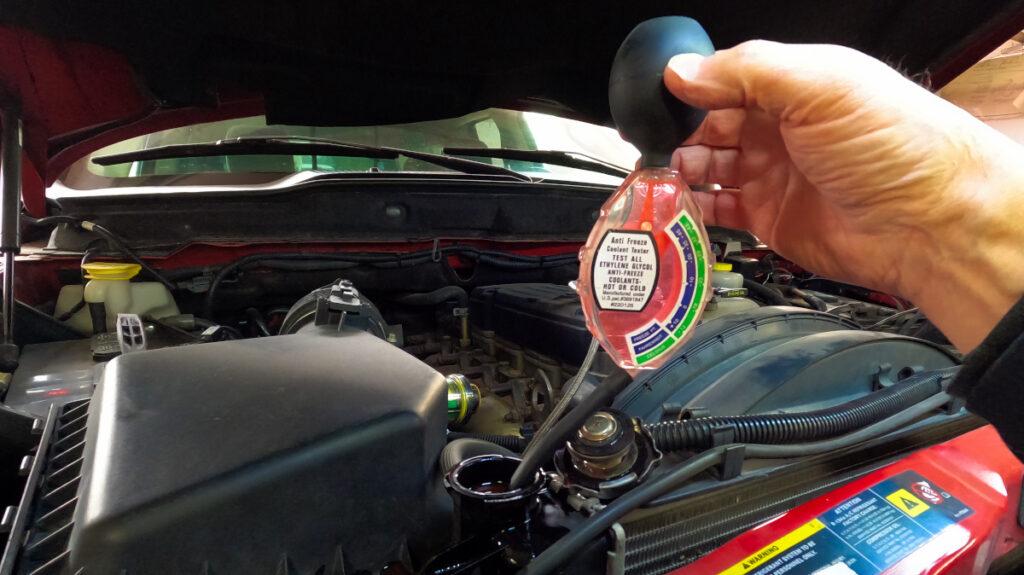
Coolant Flow, Analyzing Old Coolant and Pressure Testing
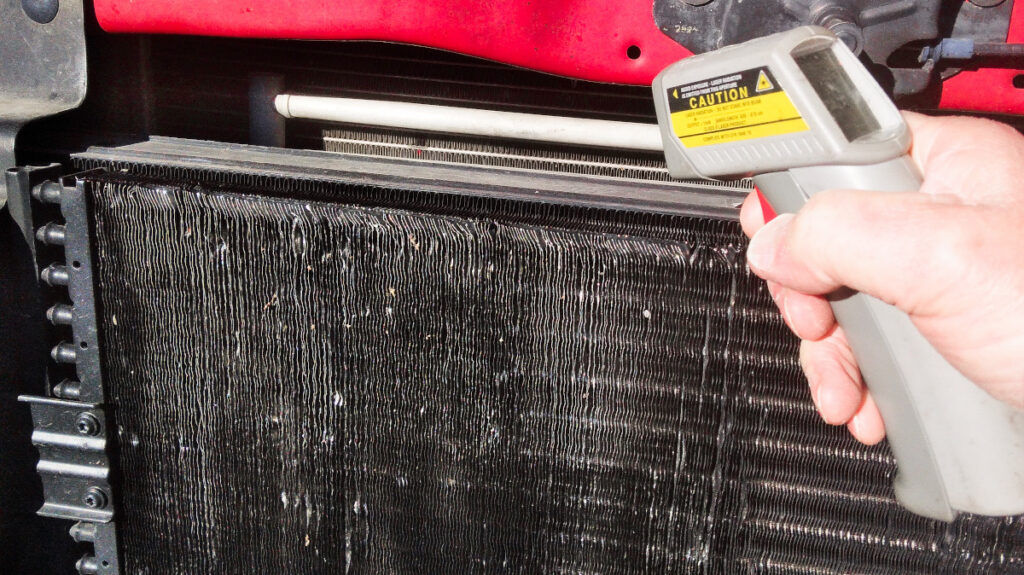
A cooling system’s pressure affects the boiling point of the coolant. To assure a safe boiling point, the thermostat and radiator cap must be in good condition. The current thermostat opens at exactly 195 degrees F and holds this temperature at cruise speeds under normal load. The cold coolant level in the overflow tank has been fluctuating slightly, which suggested that the radiator cap may not be holding its rated 16 psi pressure. The cap and entire cooling system called for a pressure check.
Before draining the cooling system, I want to know the overall condition of the system. If there is an issue with the heater temperature or the engine’s operating temperature, it’s time to replace the thermostat. If the engine shows a normal operating temperature, and the heater is not blowing hot air, I troubleshoot the coolant flow through the heater core and the HVAC blend door control system. Since the heater core is buried within the HVAC plenum behind the dash, the easiest check is the heater core inlet and outlet pipe temperatures. These pipes and hoses are readily accessible in the engine bay.
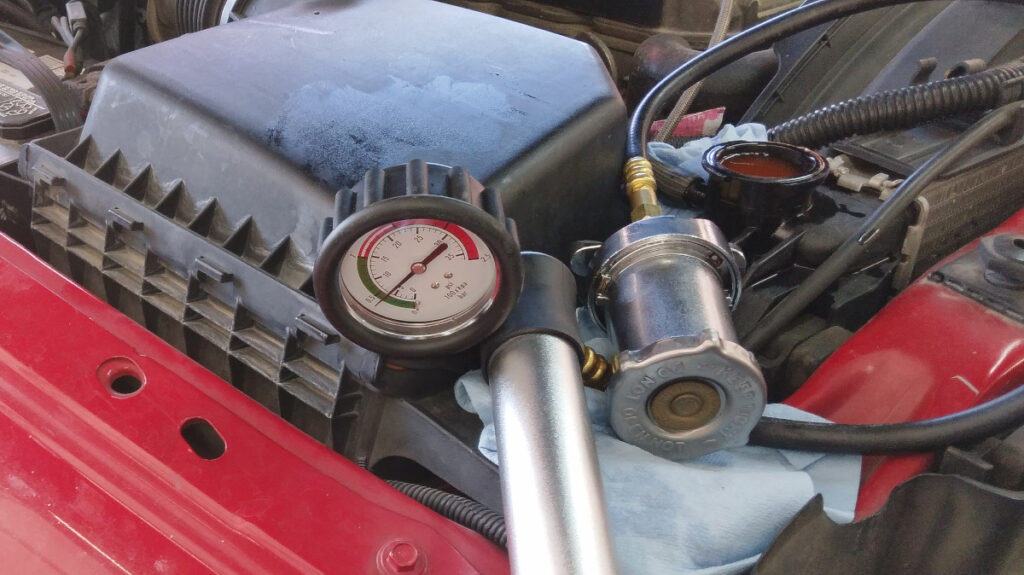
Rislone Hy-per Cool™ Cleaner & Super Flush
There are several flushing methods. On this well maintained system, without signs of scale or a bad strip test reading, a quality flushing solution will loosen any gel or normal scale. I use Rislone Hy-per Cool™ Cleaner & Super Flush. The product removes deposits, neutralizes acids and prevents corrosion, scale and deposits. It also contains water pump lubricant. Some flushing compounds are harsh acids or abrasives that can damage the water pump’s seal or the bushing in an old style pump. For Ram Cummins 5.9L water pumps, premature pump failure needs no encouragement. This level of preventive care is valuable.
Tap water should not be used in a cooling system. Nevada’s city water and well systems are typically hard, mineralized water. We installed a whole house and shop water filtration system with a softener. The system reduced water spotting on glass when we wash vehicles. Despite this, I still flush cooling systems with pure distilled water. Tap or garden hose water has never been used in the Ram’s cooling system.
Note: Coolant is toxic and attractive to pets and children. Dispose of drained coolant promptly and properly. Waste transfer stations and local auto supply stores often accept drained coolant. Make sure you have an outlet for the used coolant before draining the system. Follow regulations and labels when handling coolant and additives.
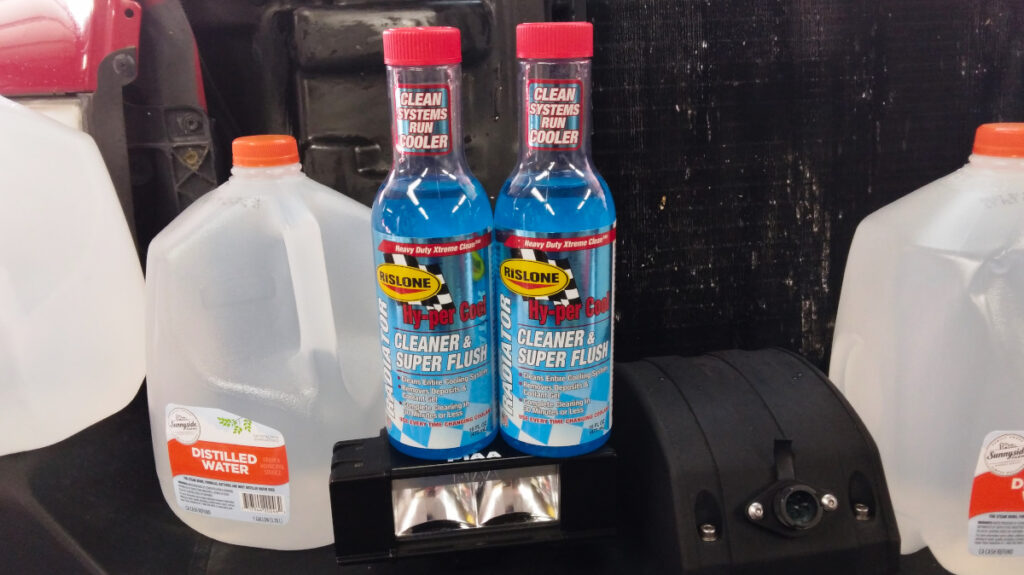
Final Fill with Coolant and ‘Super Coolant’
The last decade has seen a push toward “wetting” additives. Wetting agents reduce surface tension between coolant and the cooling system components. The aim is to eliminate minute bubbles, enable better heat transfer and enhance the coolant’s ability to dissipate heat. Diesel engines are all about heat, and I have been intrigued with claims of lower cylinder head temperatures (CHT). With this flush and a clean cooling system, the timing is right for testing a quality wetting product.
Here, I chose Rislone®. Hy-Per Cool™ Super Coolant is described as “very high cloud point surfactants” aimed at wetting to reduce coolant surface tension. Tests show reduced engine temperatures, a lower risk of overheating, general lubrication and protection of the water pump. The product also claims to prevent corrosion, erosion and electrolysis on aluminum, plastics and rubber in the cooling system.
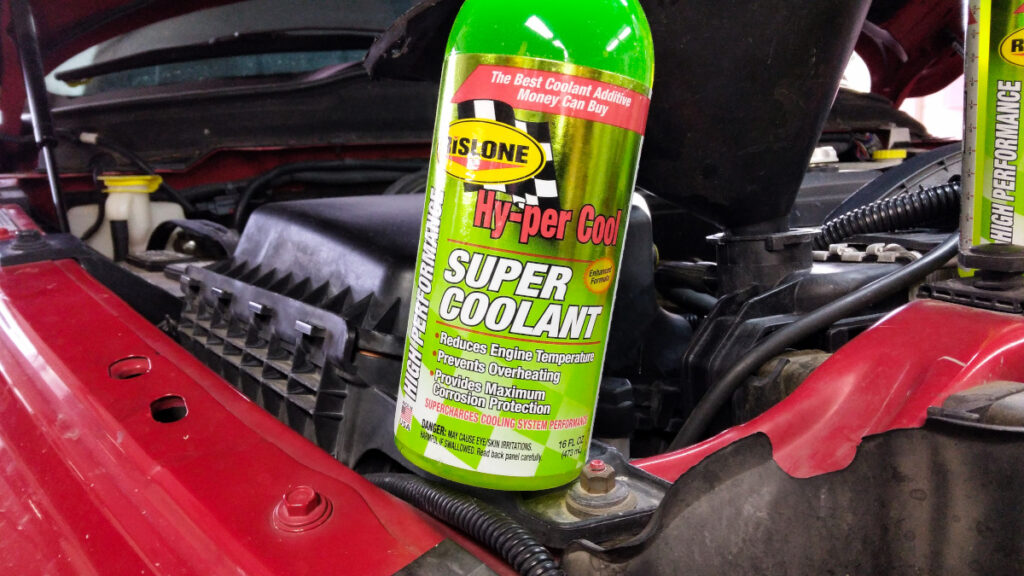
Here is Rislone’s description of how Hy-per Cool™ Super Coolant works:
“Rislone® Hy-per Cool™ Super Coolant contains very high cloud point surfactants designed to provide maximum wetting (coolant surface tension reduction) at normal and high cooling system operating temperatures. This supercharged coolant mixture eliminates bubbles, resulting in improved heat transfer to dissipate heat more efficiently in the entire cooling system. Real world and laboratory testing shows reduced engine temperatures by up to 30°F helping to prevent overheating. Super Coolant lubricates and protects the water pump, and helps prevent corrosion, erosion and electrolysis of all parts of the cooling system, including aluminum, plastics, rubber and more. Super Coolant works with all types and colors of glycol/water based coolants including yellow, orange, pink, red, purple, blue, green regular silicate & non-silicate and extended life antifreeze. It also works great in systems containing only water…Provides extra protection against higher engine temperatures. Up to 75°F lower cylinder head temperatures (CHT) enhance engine efficiency, proving better fuel economy, power and performance.”
My concern for Cummins water pumps is reason enough to try the product. Though I have never overheated the ’05 Ram’s 5.9L H.O. engine, reducing cylinder head temperature on any turbodiesel engine is a good idea. With a goal of 500,000 or more miles from this 5.9L H.O. engine, there is plenty of time to real world test this Rislone® wetting additive.
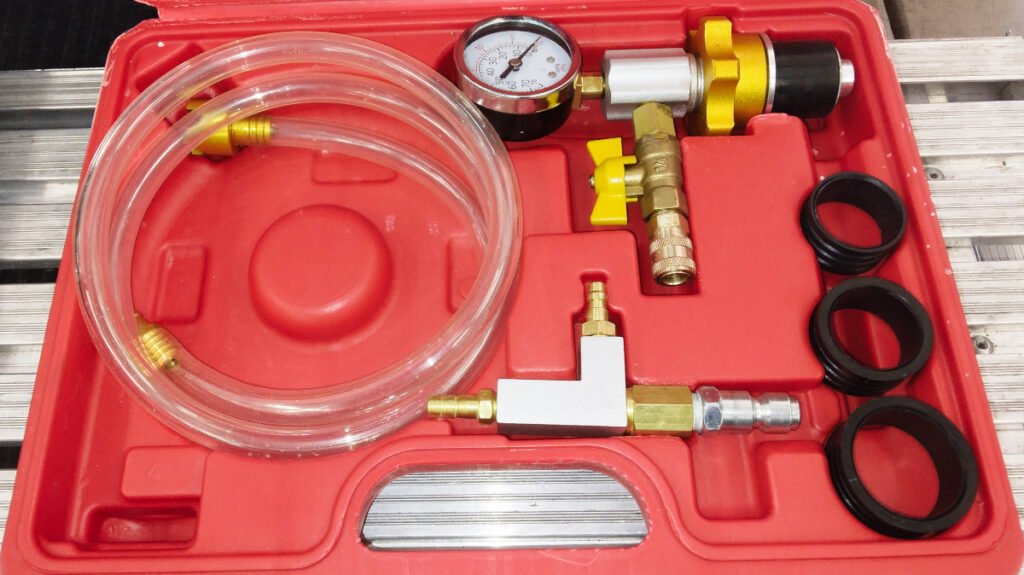
There are options for the coolant refill procedure. The use of a vacuum filling tool is now popular and does save considerable time. I use this method when practical or necessary. The cooling system becomes a vacuum chamber, drawing down at the radiator filler neck until the system in under a negative pressure (vacuum) of 18-20 in/hg vacuum.
A vacuum siphon coolant refill tool uses compressed air to create a vacuum in the cooling system. This method has the advantage of quickly siphoning liquid into the cooling system. The vacuum/siphon method eliminates “burping” the system. Vacuum removes nuisance air in the system. Without a vacuum fill tool, it can sometimes take several full engine warmups and cooldowns to replace air with coolant from the overflow tank. This is why the Ram shop manual recommends filling the overflow tank for the first run of the engine and checking the tank’s coolant level afterward. Two or more adjustments of the overflow tank’s coolant level are not uncommon. Vacuum filling eliminates that need. After vacuum filling the radiator to full, a normal amount of mixed fresh coolant can be added at the empty overflow tank.
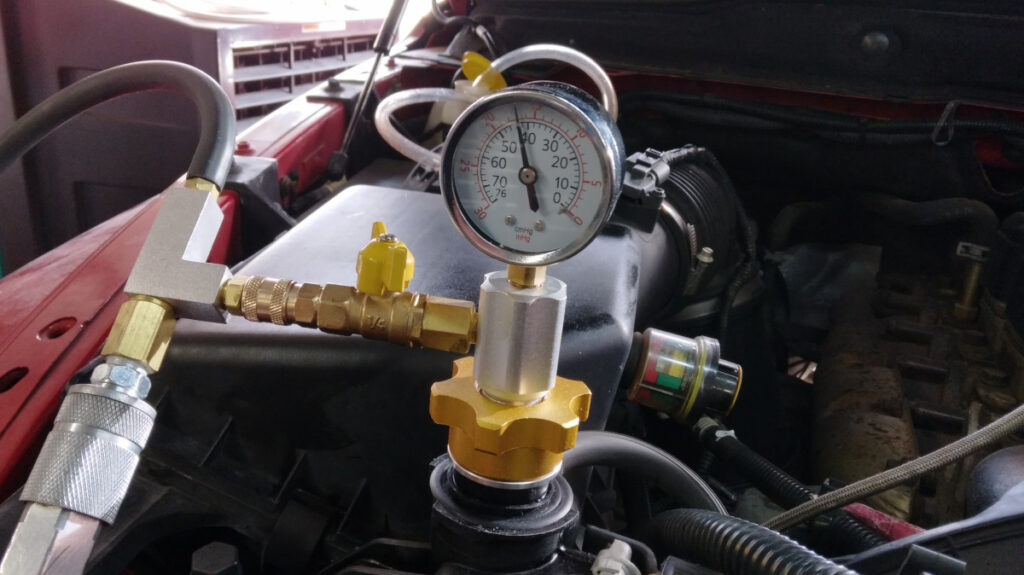
A downside is that the 20 in/hg vacuum at the radiator filler neck will collapse the radiator hoses. If the hoses are older like my system, this is a strain on the hoses. While it looks amazing to watch gallons of fresh antifreeze coolant mix siphon from a clean drain pan directly into the radiator and cooling system, weakening an older radiator hose in the process may not be worth the time savings. If you use a quality vacuum refill system, follow the instructions carefully. When I renew the radiator hoses, I will use my vacuum refill tool to fill the cooling system. This time I used the conventional fill method.
Final Tips and Takeaways
A Ram Cummins engine is easier to fill with antifreeze-coolant mix than most systems. The challenge when filling any cooling system at the radiator filler neck is leveling coolant in the engine block and head. On many engine designs, air gaps remain in the engine, heater core and hoses. Sometimes, only the radiator gets full. The Cummins 5.9L ISB engine has the advantage of two one-way check valves or “jiggle pins” that help vent air as you fill the cooling system. Unlike with some cooling systems, the Cummins engine must be filled without the engine running.
Note: If you use 50/50 premix coolant, the entire cooling system must be purged and filled with premixed coolant. You cannot get beyond a 50% mixture unless you add concentrate. Though convenient, premix limits your protection to 50/50 or typically minus-34 degrees F for ethylene glycol base antifreeze.
The Ram’s cooling system is now fresh. The Rislone® additive products cleaned the system and provide an ongoing wetting effect for the engine block, cylinder head, heater core and other components. Lubricating the water pump may extend its service life. Protection against corrosion and electrolysis is always essential. The radiator still tests in top condition and should stay that way.
Before flushing the system or changing coolant, perform the pressure and coolant flow tests with a noncontact infrared thermometer. For an in-depth flush or reverse flush, remove the thermostat and reinstall the thermostat housing. Use a flushing solution like the Rislone Hyper-Per Cool™ Cleaner and Super Flush before performing a pressure flush or reverse flush. This will loosen scale and debris.
Cautions: If you use city or well water for a pressure flush, flush and rinse the system with pure distilled water afterward. Minerals, nitrates, nitrites, chlorine and the pH levels in public and well water systems can be detrimental to a cooling system. Before pressure flushing or reverse flushing the system, remove the thermostat and put the thermostat housing back in place. (Install a new thermostat after pressure flushing or reverse flushing the system.) If the system needs pressure flushing or reverse flushing, avoid pushing loosened scale and debris into the heater core. Pressure flush or reverse flush with the engine shut off. When using a pressure flushing tool, the engine must be completely cooled down before flushing. Never apply more than 20 psi of air or water pressure into the cooling system.
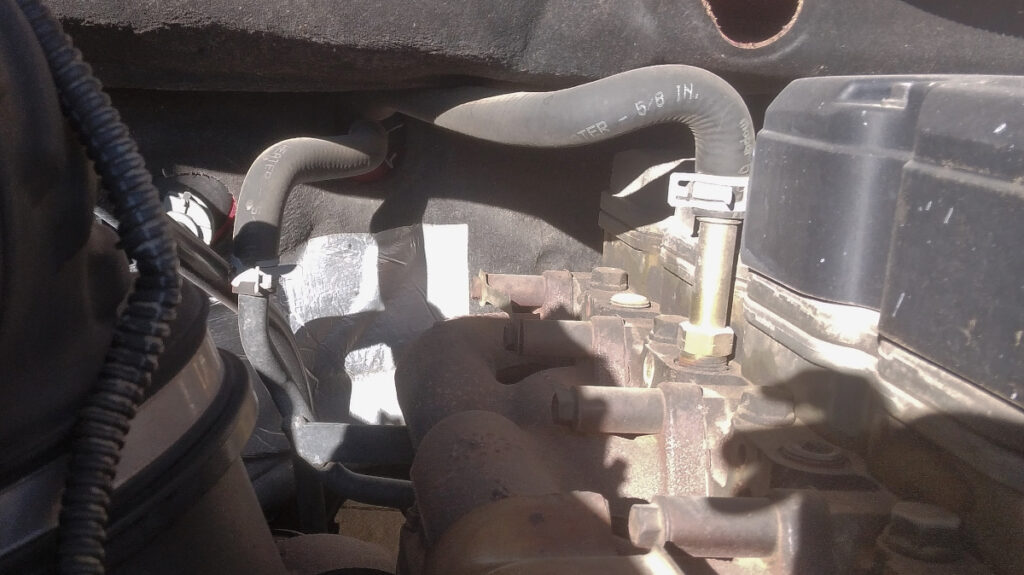
Pressure flushing from the heater’s return hose with the radiator lower hose detached (run to a drain pan) will reverse flush without clogging the heater core. Even with the lower radiator hose disconnected, a one-way “jiggle pin” check valve(s) in the Cummins engine may limit the effectiveness of reverse flushing from the heater outlet hose. Make sure there is adequate flow at the lower radiator hose when reverse pressure flushing from the heater core outlet. At the least, you will reverse flush a restricted heater core.
Electrolysis and Cavitation
A topic around modern cooling system care is electrolysis. The cooling system is conductive, and the Ram’s electrical system is D.C. with a ground circuit. If the radiator is not properly grounded or there is a faulty engine or chassis ground, the coolant can act like an electrolyte. This causes pinholes in the radiator, galvanic corrosion and other damage. One cure, of course, is proper grounding of the entire electrical system, including the chassis, engine, body and radiator.
Chrysler and FCA have done a good job around grounds. Problems usually occur with aftermarket modifications or accessories that are not properly grounded. Additional causes of radiator electrolysis range from bad pH balance in the coolant to stray alternator voltage. This is one more reason to periodically flush the cooling system and change coolant. You can check for electrolysis with straightforward volt/ohmmeter tests. An excellent article on the subject with testing steps is at: https://ve-labs.net/electrolysis-101/how-to-test. The information is valuable.
Another concern is cavitation. Cavitation is not aeration or air entering into the cooling system. Aeration might occur when the water pump is leaking or the radiator cap has a seal problem. Either issue would draw ambient air into the cooling system. Cavitation is air bubbles in coolant caused by pressure fluctuations. The best example is a diesel with cylinder liners. The power stroke and up stroke force cause the liner to vibrate, creating vapor bubbles between the liner and the coolant. Liner movement and pressure cause these tiny bubbles to implode and hammer against the liner. The shock waves bore pits in the liner.
Additives found in the correct coolant will help protect against cavitation and electrolysis. For Ram Cummins engines with cylinder liners, use the recommended Fleetguard® products. For our 5.9L and 6.7L Cummins parent bore engine blocks, I use an approved antifreeze coolant like Zerex G-05 or a Fleetguard® recommended product. Rislone® Hy-Per Cool™ Super Coolant helps fight electrolysis.
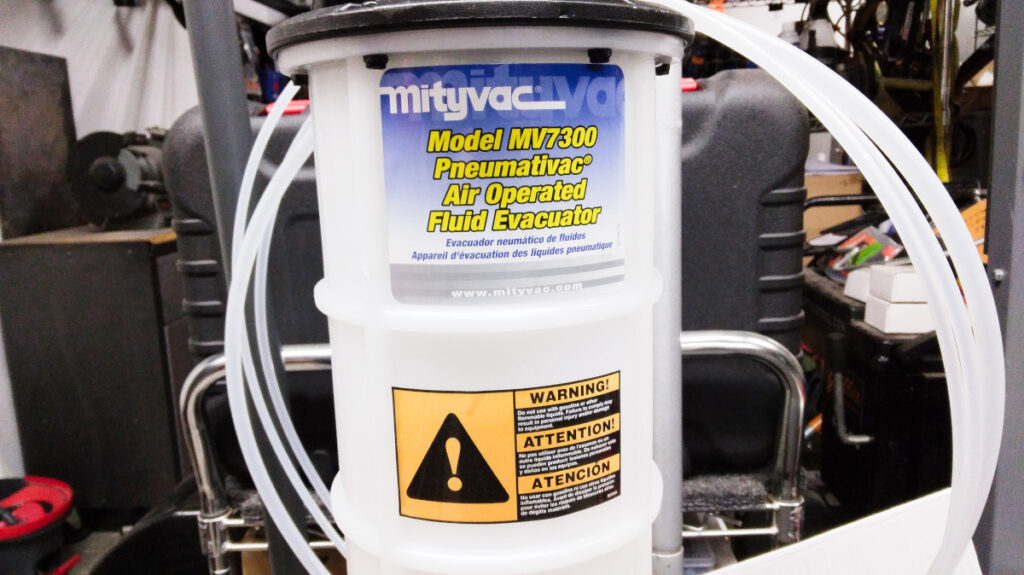
I am satisfied with the research and approvals on Zerex G05 antifreeze coolant and its ready availability. For information on Cummins and Fleetguard® coolant technology and products, visit the https://cumminsfiltration.com website. Fleetguard® coolant is price competitive and provides additives formulated for the Cummins diesel engines.
Regarding Rislone® additives and products, I began using Rislone engine oil additive in the late sixties, initially as a light- and medium-duty truck fleet mechanic. Rislone’s original engine treatment played a key role in the maintenance of our 21-vehicle fleet. Today I use Rislone Engine Treatment, Diesel Fuel System Treatment and the cooling system products demonstrated in this project. I expect Hy-Per Cool™ Clean & Super Flush and Super Coolant to play an important role in extending the service life of our Gen 3 Ram Cummins engine.
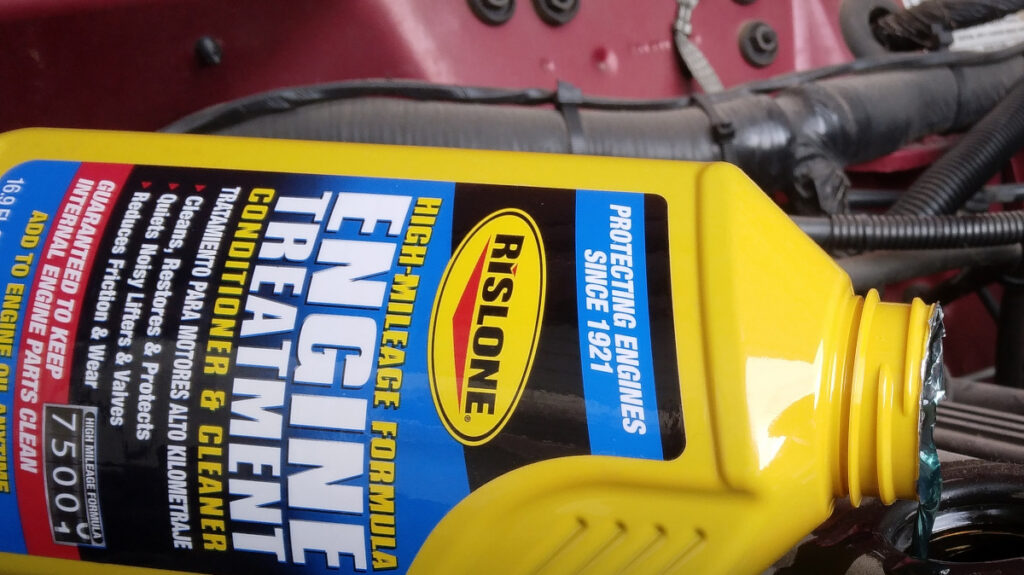
For more details on Rislone products visit the official website at https://rislone.com.

